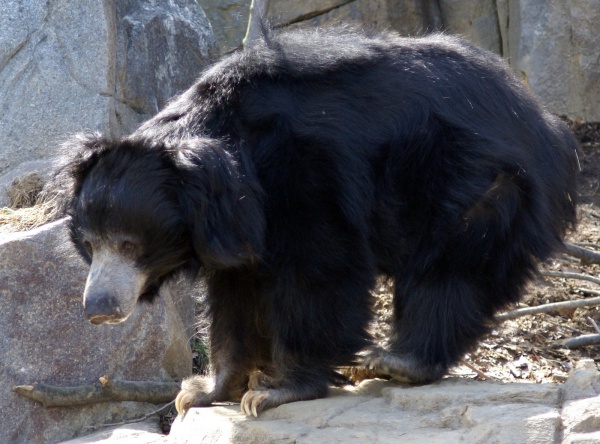Facts About Sloth bear
The sloth bear, native to the Indian subcontinent, is a fascinating species known for its diet of fruits, ants, and termites. Sadly, it’s listed as Vulnerable on the IUCN Red List due to habitat loss and degradation.
One of the sloth bear’s standout features is its long lower lips, perfectly adapted for feeding on insects. They also have shaggy fur and sickle-shaped claws. Interestingly, they evolved from the ancestral brown bear, developing traits through convergent evolution that suit their unique diet and lifestyle.
Sloth bears typically breed in the spring and early summer, with births occurring around winter. Unfortunately, human activities such as hunting and habitat destruction have significantly reduced their numbers over the years. There was even a time when sloth bears were tamed for entertainment or kept as pets, a practice that has thankfully declined.
These bears are medium-sized, weighing between 55 and 145 kg. They have long muzzles, large floppy ears, and a coat of shaggy black fur. You can find them across India, Nepal, and Sri Lanka, living in various habitats below certain altitudes.
Behavior-wise, sloth bears are quite interesting. They often travel in pairs, are excellent climbers, and have a wide range of vocalizations. They’re mostly nocturnal but can become more active during the day when they’re with their cubs. They are adept at hunting termites and ants, and their diet also includes fruits and occasionally carrion. They interact uniquely with other animals, including tigers and leopards.
The conservation status of sloth bears is worrying, with fewer than 20,000 left in the wild. Conservation efforts include legal protections and specialized programs. However, human-bear conflicts are common, as sloth bears can be quite aggressive toward people. Historically used for entertainment, there are now efforts to end such practices.
In popular culture, the sloth bear is perhaps best known through Rudyard Kipling's "The Jungle Book" where the character Baloo is inspired by this species. The bear is known by various local names across different regions.

 China
China